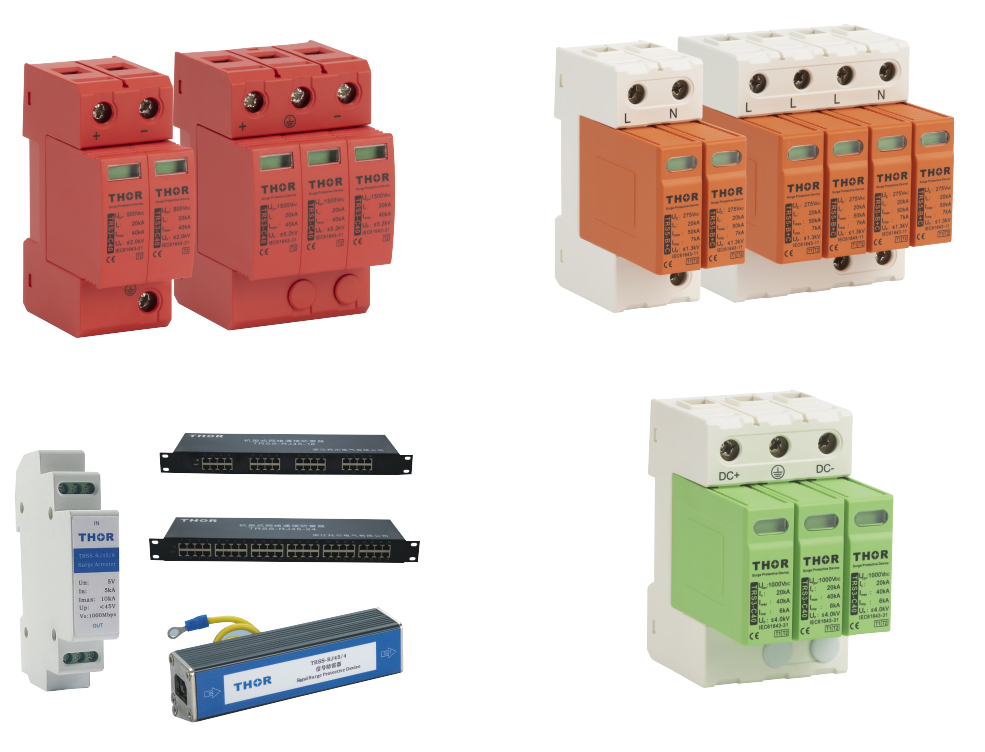What is the difference between SPD, MCB and RCD?
Understanding the nuances of electrical safety devices is crucial for homeowners and professionals in the electrical field. Among the many devices available, Surge Protection Devices (SPD), Miniature Circuit Breakers (MCB) and Residual Current Devices (RCD) play a key role in protecting circuits and their connected equipment. But what is the difference between the three?
A Deep Dive into Surge Protection Devices (SPDs)
SPDs, or AC surge protectors, are specifically designed to protect electrical equipment from voltage spikes. Here's how it works:
Purpose: The main function of the SPD is to limit transient overvoltages and divert inrush currents. It provides a short path for the surge to reach the ground, thereby protecting the equipment connected to it.
Trigger: It activates in response to a voltage surge, which can be caused by a variety of sources, including lightning strikes or grid disturbances.
Protection: SPDs primarily protect against transient overvoltages that can damage, degrade, or destroy electronic equipment or components to which they are connected.

Explore Miniature Circuit Breakers (MCB)
MCB serves as a replacement for fuses in most modern circuits, and its primary role is slightly different from that of SPD:
Purpose: The main job of MCB is to protect the circuit from damage caused by overload or short circuit. If a fault occurs, the miniature circuit breaker will "trip" or open the circuit.
Trigger: Activates when the current flowing through the circuit exceeds the rated limit of the MCB. This can happen due to an overload (too many devices connected) or a short circuit (current bypassing its normal path).
Protection: MCBs primarily protect wiring within a building from overheating or potential fire hazards caused by overloads or short circuits.
In-depth study of leakage current protector (RCD)
Purpose: RCDs are particularly important in situations where there is direct contact with electrical equipment, such as in bathrooms or outdoor environments.
Triggers: They can respond within milliseconds and cut off power as soon as an abnormality is detected.
Different Types: Depending on the use, there are various RCD types including fixed, socket-mounted and portable.
Comparison of SPD and MCB
While both devices contribute to electrical safety, their roles are different:
1. Protection properties: SPD protects against voltage surges, while MCB protects against overcurrent conditions such as overload and short circuit.
2. Working mechanism: When the voltage exceeds a certain threshold, the SPD becomes conductive and transfers the excess voltage to the ground. Conversely, when the current is too high, the MCB breaks the circuit completely.
3. Usage scenarios: SPDs are critical in areas prone to lightning strikes or where sensitive electronic equipment is used, while MCBs are a standard component of almost all modern electrical installations.
4. Lifespan: Over time and after multiple surges, SPDs may degrade and require replacement. Miniature circuit breakers, on the other hand, can be reset after tripping, but may also need to be replaced after extended use or when they no longer function properly.
The difference between SPD and RCD
While both SPDs and RCDs play key roles in electrical safety, their primary functions are different:
The focus of SPD is to protect electrical equipment from overvoltage, ensuring its service life and preventing potential damage.
The RCD's primary concern is personal safety, ensuring that the risk of electrical shock is minimized in the event of a malfunction.
It is worth noting that although the functions of the two devices are different, they can be used together to provide comprehensive protection for the device and the user.
Although SPD, MCB and RCD have different functions, they can be used together to provide comprehensive protection for equipment and users.
In the world of electrical safety, it’s crucial to understand the tools at our disposal. While surge protection devices and earth leakage protection devices may have different primary purposes, they both emphasize the importance of protecting against the multifaceted risks present in electrical systems.
